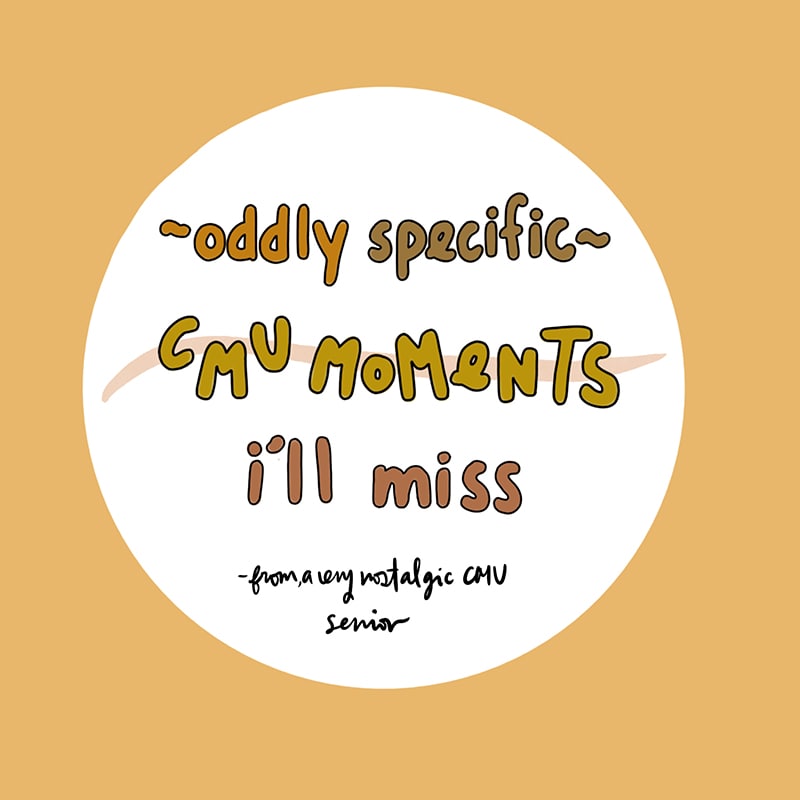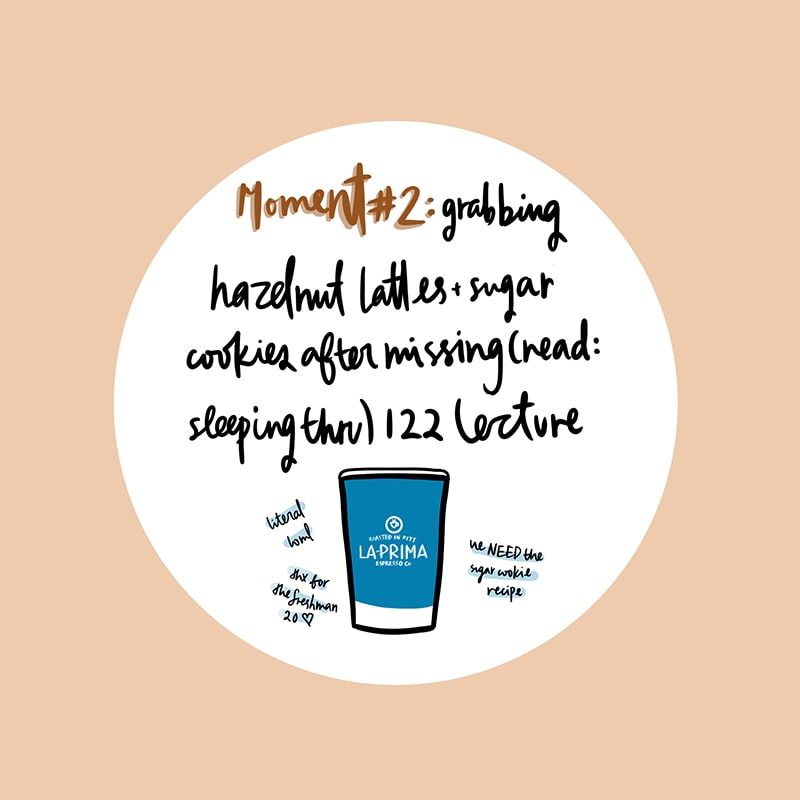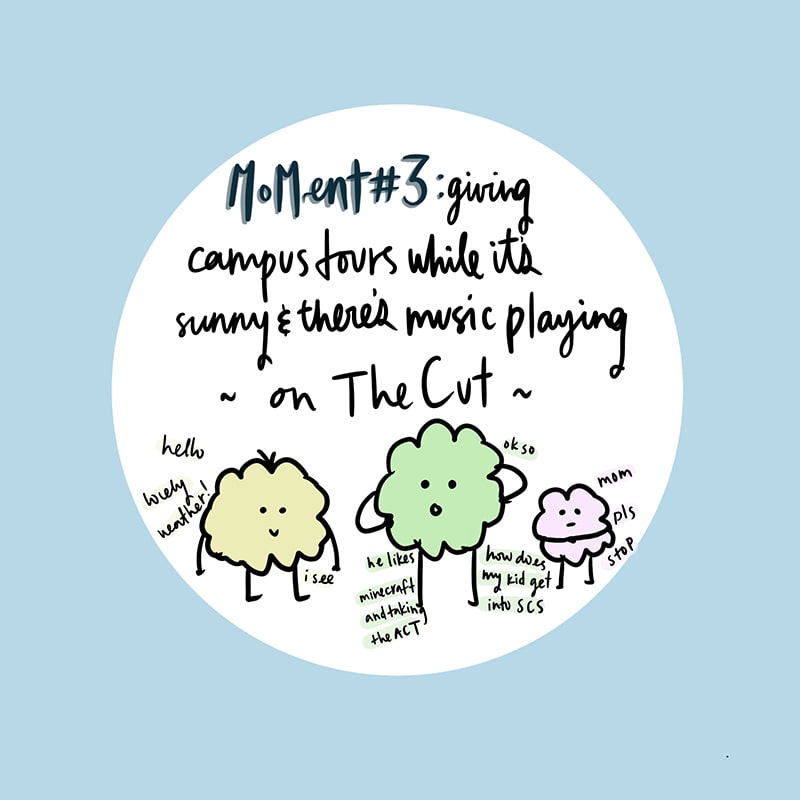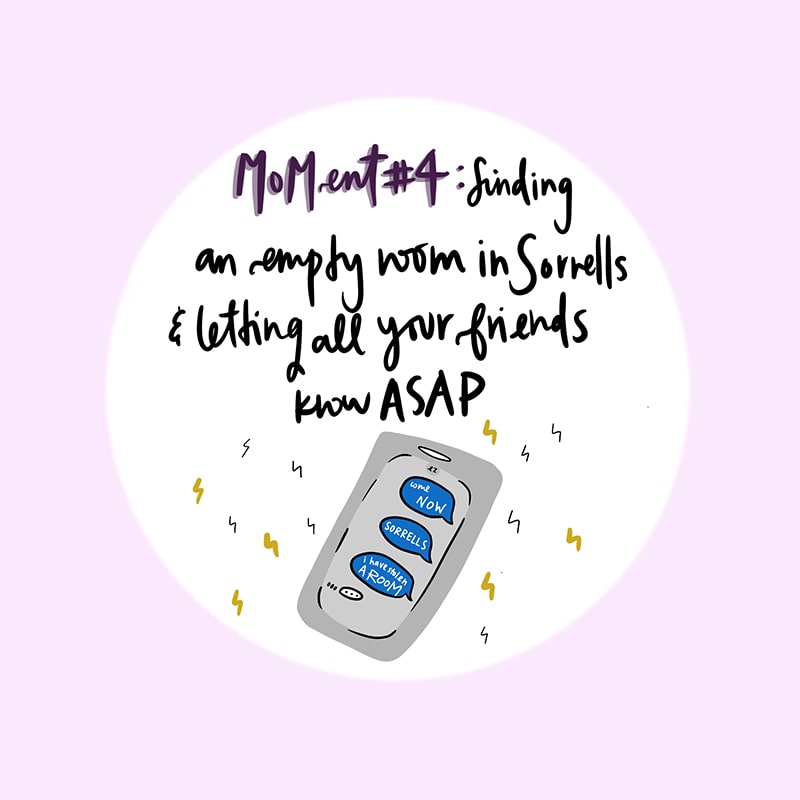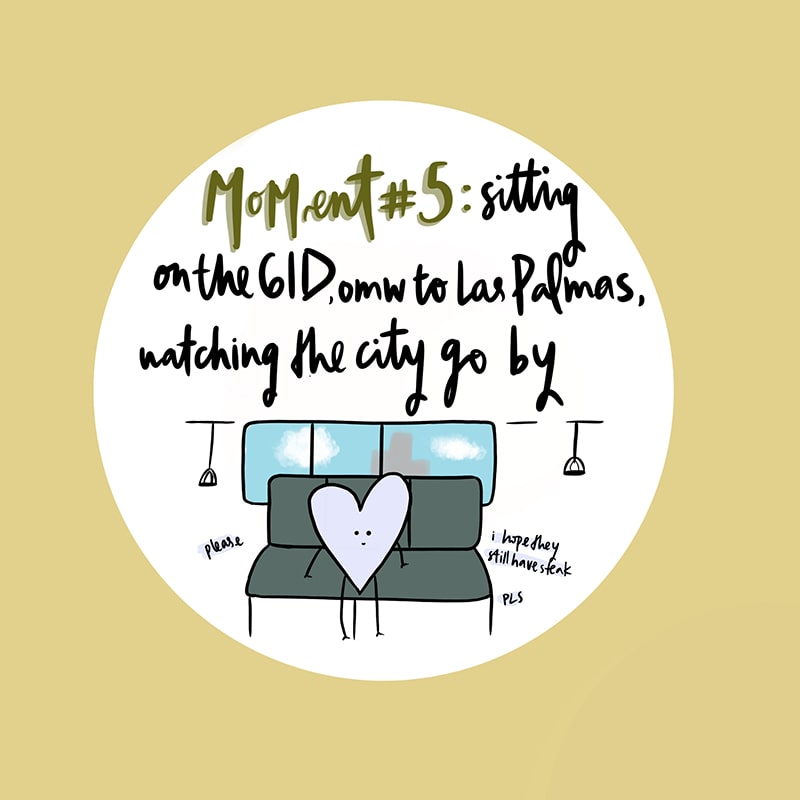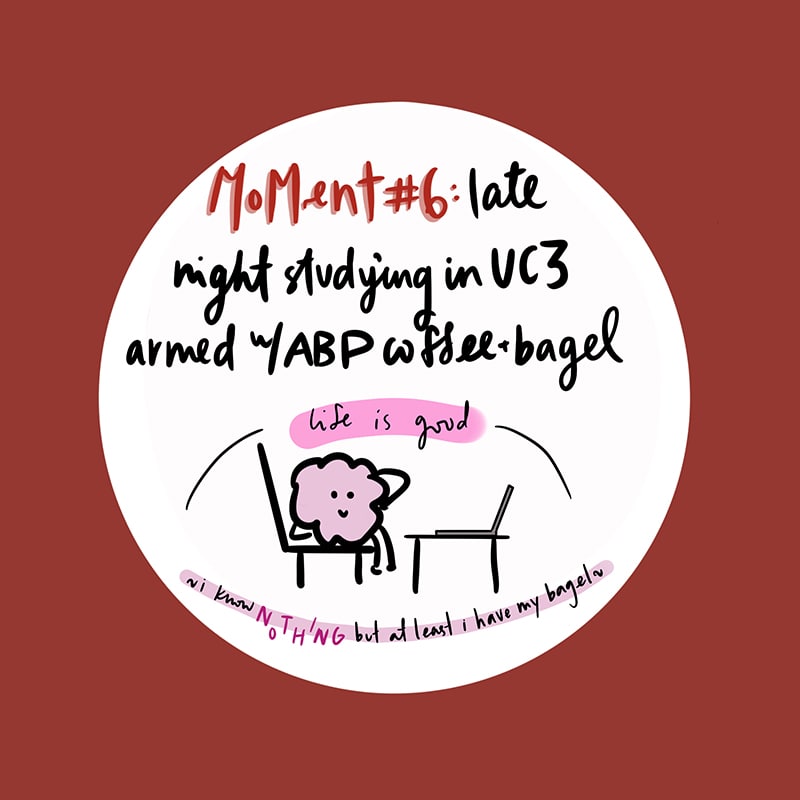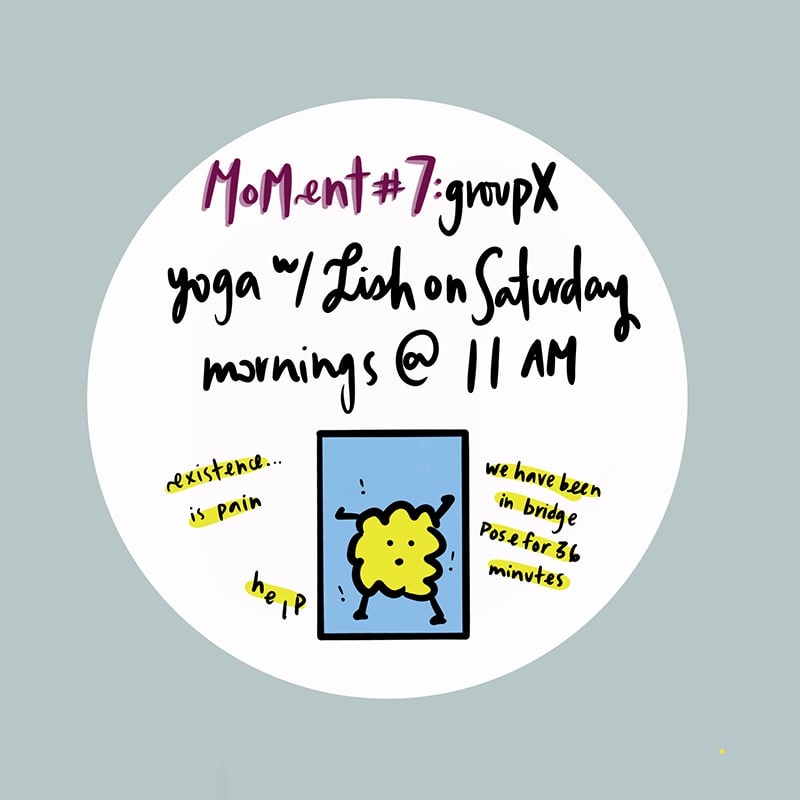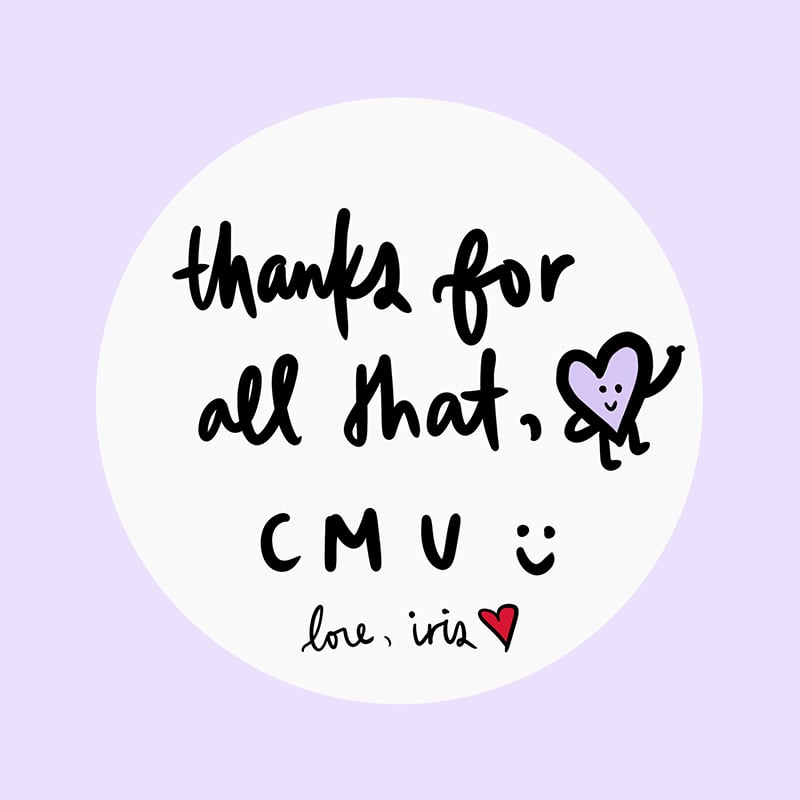The Garden: Volume Five
Uniquely Connected & Thriving Together at Dietrich College
In This Issue: A Message from Richard Scheines | Liu codes her way to international virality | Delgado brings passion for social justice and community to honors thesis | Song expresses self-empowerment in her small business | Bjorndahl takes and inclusion to the next level in Nature of Language | Initiatives from the Information System Department | Conversation & Candy | “On Diversity,” by Ruel Beresford | Poetry Selection: “American Dream” by Ethan Rhabb | A Comic by Iris Pei
A Message from Richard Scheines
Bess Family Dean
Dietrich College of Humanities and Social Sciences

It is always a pleasure to release another issue of The Garden. After over a year of work on a strategic plan, reviews by our legal team at Carnegie Mellon, and hosting a series of feedback sessions, this living document will serve as our guide in the new year and beyond! I am grateful to the over 20 students, staff, and faculty who worked on this plan, and I invite anyone who did not get the opportunity to read it to take the time to do so now. As our community's needs evolve, so will this plan, but we need to hear from you to make this happen.
While the plan was undergoing revisions, we continued to forge ahead by implementing many of the plan's recommendations before its launch. We have many miles to go, but we are off to a positive start! For example, we changed the processes by which we search for and hire faculty, and (year one) 2/3 of our regular faculty hires were women, and 1/3 are from underrepresented populations. We have already concluded a successful search this fall in Modern Languages –– Professor Uju Anya will join us in the fall of 2021 as a tenure track faculty member. All Dietrich departments with Ph.D. programs have devoted money, and the college has committed $4 million of our endowment to provide eight graduate student fellowships per year for Ph.D. students. In our work with the community, Arts Greenhouse has received meaningful funding and recent grants. As we seek to be intentional in our efforts to support the community beyond Carnegie Mellon, we will soon be announcing an exciting initiative to support high school students interested in humanities and arts to get to college and then fully support them to attend. Many more initiatives to report on, but I'm already way over my text budget.
This semester, many in our community have endured a very stressful time, and really a dumpster fire of a year; let's hope this upcoming semester brings you moments of relief and optimism. We are thriving in a way that may be different from how we may have uniquely defined it last year, but we are here and all of us are an important part of our community –– even at a distance. I am excited to return to campus to engage in that small but crucial human ritual: saying hi to people in the hall! In the meantime, I am looking forward to a break during the holidays –– I hope all of you stay safe and get a real break as well.
Best,
Dean Scheines
Liu codes her way to international virality
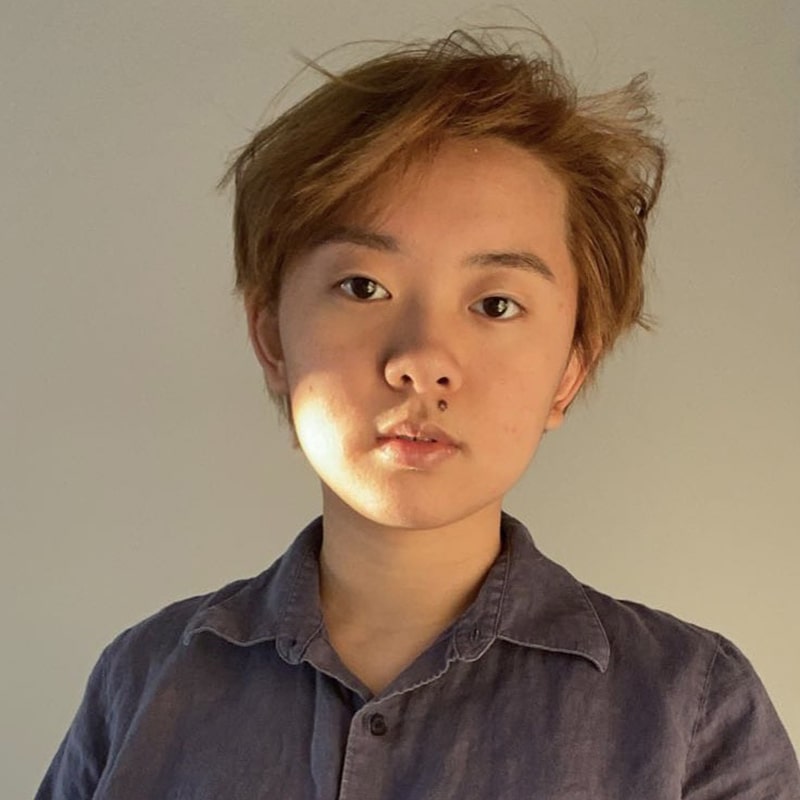 In late September, Michelle Liu (she/her) decided to post “Receiptify,” a Spotify plug-in she had coded herself, on her personal social media account. After waking up to over 25,000 shares the following day, Liu, a first-year studying Information Systems, had gone viral overnight.
In late September, Michelle Liu (she/her) decided to post “Receiptify,” a Spotify plug-in she had coded herself, on her personal social media account. After waking up to over 25,000 shares the following day, Liu, a first-year studying Information Systems, had gone viral overnight.
“Receiptify,” a play on “receipt” and Spotify, was inspired by the popular Instagram account @albumreceipts, which displays popular albums and their tracklists in a receipt format. Liu’s plug-in takes the visual inspiration, but is unique in that it generates Spotify users’ top tracks from the last month, six months, or all time.
“I’ve seen other Spotify plug-ins that show similar data like top tracks, but usually in a playlist format,” Liu shared. “So I combined different ideas and coded this in one day. I did not expect for it to blow up at all!”
“Blow up” almost feels like an understatement to the popularity of the plug-in. Receiptify earned coverage from many music journalists, as well as international coverage from Indonesia and Latin-America. Eventually, the creator of @albumreceipts had contacted Liu to learn more about her plug-in.
“Such cool people reached out to me,” she said of the reception. “I ended up having virtual chats with random college students who just wanted to know more about ‘Receiptify.’”
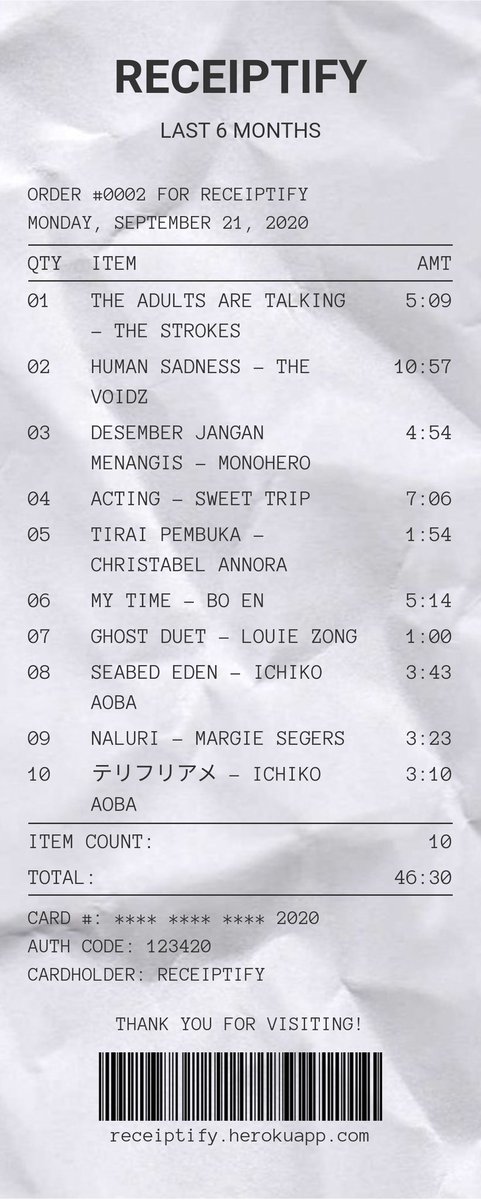
Fortunately, the support Liu received was not exclusive to tech and music junkies from all over the world. Carnegie Mellon’s Frank-Ratchye STUDIO for Creative Inquiry, which supports research on the intersection of art and technology, had supported Liu’s work as well. Shortly after posting the plug-in, The STUDIO gave Liu a $500 micro-grant to expand “Receiptify” by making it available for users of other music streaming services, such as Apple Music.
“It was so nice to see CMU support me in this way,” Liu shared.
Technology, and specifically coding, has played a significant part of Liu’s education. Having started her journey with coding before high school, Liu found herself passionate about educational outreach on technology — especially considering that coding and similar fields lack race and gender diversity.
“Sometimes, it’s really intimidating to start coding as a woman, since you’re mostly surrounded by men,” Liu said. “Reaching out to more women and underrepresented communities to explore this field then becomes that much more important.”
The most remarkable aspect of “Receiptify” and its success for Liu is seeing how technology can reach and be used by so many people. Despite her plug-in’s virality, Liu has no intentions of plateauing; she hopes to continue making programs for leisure, or even more Spotify plug-ins. Additionally, she intends to continue making her mark at CMU through creating applications for TEDxCMU’s Innovation Team and being part of the Scotty Labs Tech Committee.
Delgado brings passion for social justice and community to honors thesis
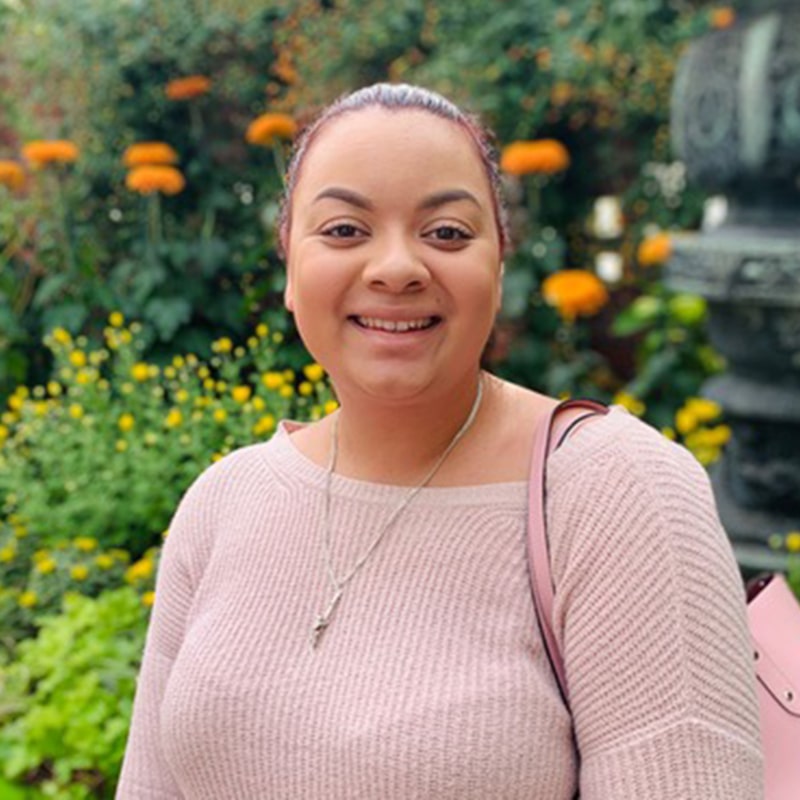 How do underrepresented and marginalized communities feel at CMU? What do they need to feel welcome? What may be missing from our community? What values can be better represented at CMU? These questions and more are being explored by Elise Delgado (she/her), a senior studying psychology and soft technologies in her honors thesis project.
How do underrepresented and marginalized communities feel at CMU? What do they need to feel welcome? What may be missing from our community? What values can be better represented at CMU? These questions and more are being explored by Elise Delgado (she/her), a senior studying psychology and soft technologies in her honors thesis project.
After being accepted as a Dietrich College Honors Fellow this past summer, Delgado began working toward a unique approach to an honors thesis: a ten-by-seven foot mural that highlights the experiences of underrepresented communities on CMU’s campus, including students, staff, and faculty.
“I was inspired by the Philadelphia Flower Show and the way it was so community focused,” Delgado, a Philly native, shared. “Being an underrepresented minority on top of CMU stress culture is a very specific experience, and I want to uplift that through community-centered art.”
Encompassing the experiences of people from diverse backgrounds and vastly different walks of life into one mural is no easy feat. Nonetheless, Delgado completed 75 interviews with CMU students, staff and faculty from all colleges, from Dietrich to the College of Fine Arts. She is now planning for the actual mural painting itself using over 100 pages of transcripts gathered through Zoom calls.
“I’m not going to treat this project as a mural of my experience alone,” she said. “Representation is really important to me. I had to get a good sample and consider multiple identities, like being a first-generation college student or part of the LGBTQ+ community.”
Addressing current movements and issues faced by Black and Indigenous people of color (BIPOC) in the mural has also been a top priority for Delgado. As she was waiting for approval on her thesis, the Black Lives Matter movement resurged following the murder of George Floyd — and she was not going to ignore it.
“The Black Lives Matter movement and what it means to CMU is deeply ingrained in my project,” Delgado shared. “Talking to underrepresented students, particularly Black students, about this is so important, and I feel that my project can embody their voices.”
Telling the stories of underrepresented members of CMU’s community, as well as Delgado’s own story, was something that could only be done through art. Delgado has been a painter for over four years, having grown a passion for the medium over time. She has explored textiles through IDEATE courses and plans to incorporate them into the mural as well.
“This mural is a culmination of everything I have learned at CMU,” Delgado said. “I want to put everything that I, and lots of students, experienced into a piece of art.”
The ultimate goal for Delgado is to have the mural become a permanent installation on CMU’s campus. For now, she is planning to make the mural portable and would like it to have temporary installations at the Center for Student Diversity and Inclusion and the Psychology Department.
Despite these ambitious goals, Elise Delgado almost didn’t apply for an honors thesis at all — she had only learned of the opportunity from her faculty advisor, Chante Cox-Boyd — one of the few women of color in CMU's Psychology Department.
“She was the one who nudged me saying that an honors thesis would be a good opportunity for me,” Delgado said. “I wouldn’t be planning this mural if it weren’t for her, and I am so thankful she did.”
Song expresses self-empowerment in her small business
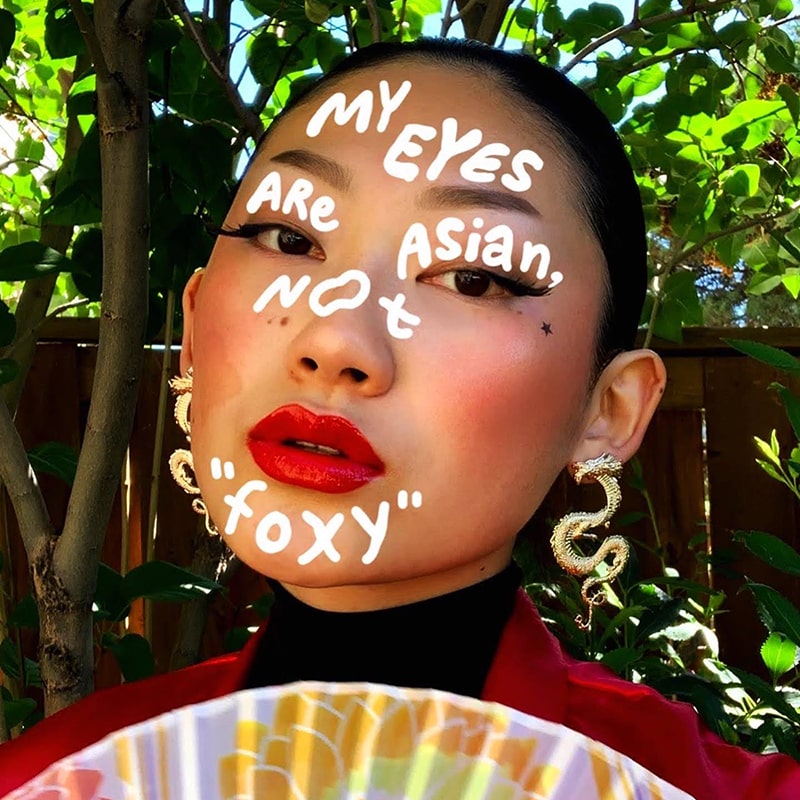 Joan Song (any pronouns), a sophomore studying business administration and creative writing, has wasted no time making their mark at Carnegie Mellon and beyond.
Joan Song (any pronouns), a sophomore studying business administration and creative writing, has wasted no time making their mark at Carnegie Mellon and beyond.
Koreana, launched by Song in July, is more than a booming jewelry business – it is a passion project, an ode to an upbringing of hard work and independence, and an avenue for the CMU sophomore to embrace their identities. Despite the online store’s success today, with orders from Australia and the Netherlands, Koreana has humble beginnings.
“In June, I made a chain for myself and posted it on my Instagram account,” Song shared. “When people messaged me saying they liked it and wanted something like it, I wondered if I could actually make this for others.”
Eventually, they did: just a month later, Koreana had a soft release with a few necklaces and earrings appropriately named “summer fling” and “blossom.” The transition from a small, Instagram-based business to having an official website and multiple orders to ship was not without its risks.
“I’ve never made shipping labels, let alone ship packages en masse,” they reflected, “Making a website without any design or coding experience was a real investment. There was this fear that I’d just wasted money on a domain for a business that could fail.”
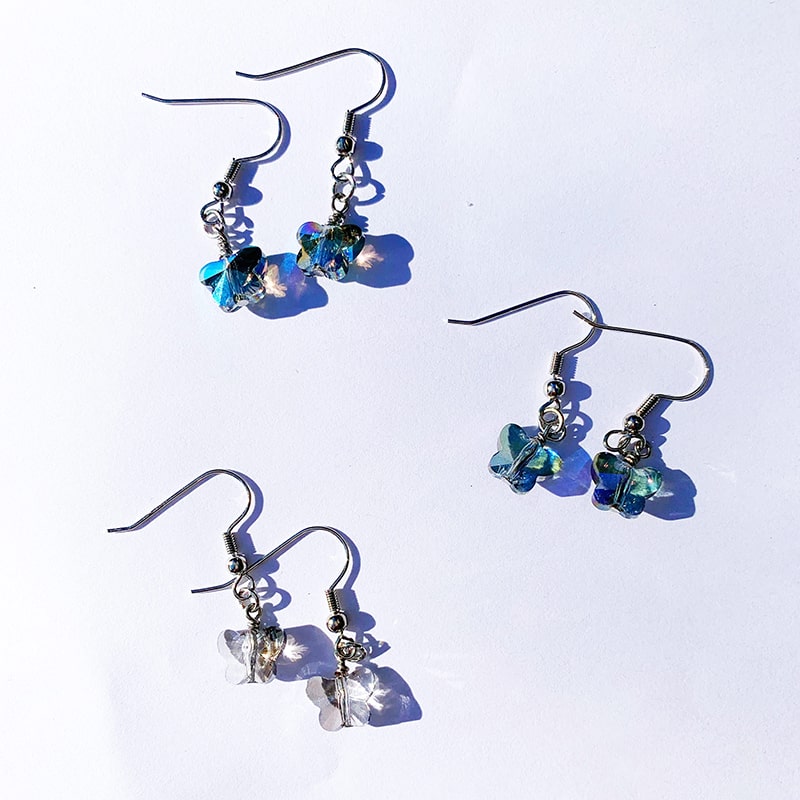 The risk, of course, paid off. Being a hard-working self-starter is not new for Song — however, they emphasize that these qualities are not symptoms of “grind culture” but rather their genuine excitement to pursue something she is passionate about.
The risk, of course, paid off. Being a hard-working self-starter is not new for Song — however, they emphasize that these qualities are not symptoms of “grind culture” but rather their genuine excitement to pursue something she is passionate about.
“I take a lot of pride in being ‘self-made,’” Song explained. “Coming from an immigrant family, this philosophy has been instilled in me since high school. It’s really important to me.”
While her classmates were in clubs and extracurricular activities, Song remembers working multiple jobs during her high school years. In her first year at Carnegie Mellon, she juggled academics with two work-study jobs and a side-hustle of doing nails for members of the CMU community. Today, Koreana’s success has certainly eased her load.
“It’s harder for me to navigate college and its challenges,” Song shared. “But I don’t want to be a victim. I definitely work hard because of a fear of being financially unstable or dependent on my parents, but I’m also really self-motivated to create because it’s fun to me.”
Song has always been a creative person, finding joy in everything — whether it’s practicing acrylic nails on a friend, making jewelry, and recently, creating a brand for herself on social media over quarantine. Beyond using her platform on Instagram to promote Koreana, Song has taken the opportunity to share her narrative as a lesbian Korean-American artist.
“I got a tripod in June and taught myself how to use Photoshop,” she said. “I was really intimidated by it at first, but over time I got more recognition for my edits on Instagram and Reddit.”
Song’s Instagram page is a gallery of selfies –– like most Gen-Z profiles –– but are special in that they often have quotes of original poetry, narratives and artful editing. One in particular says, “Ethnic features are not a trend. My eyes are Asian, not foxy.” This post gained over 1,400 likes and sparked a meaningful conversation about Asian, and specifically East-Asian monolids and the recent “foxy eye” trend adopted by mostly white influencers. Song said they received DMs from strangers about feeling confidence in their ethnic features.

“It’s always really inspiring for me to get messages from people about the impact I’ve made in their lives, however small of an interaction,” Song shared. “Whether it’s someone telling me that I gave them the confidence to say something difficult or to feel more secure and proud of their own identity, I feel so uplifted and grateful.”
Social media is not the only way Song works to give back to her audience and embrace her identities. With Koreana’s debut came a pronoun necklace that donates 50% of all proceeds to the Equality Federation. The Equity Federation works to uplift and strengthen state-by-state legislation on LGBTQ+ rights, as well as intersectional issues that affect queer people of varying experiences. On top of that, Koreana has committed to being a carbon neutral small business. Song has invested in thermal label printers to avoid using ink and plastic, as well as biodegradable packaging.
In less than six months, Song has made Koreana a reflection of their values, identities and passions. Despite Song’s fear of failure and insecurities over being a “real” artist or creator, the jewelry store has become an overnight success.
“I want to encourage everyone to pursue a passion even if you’re afraid that you’ll fail or if you don’t think you aren’t a real artist or entrepreneur,” they shared. “There is always space for more creativity.”
Bjorndahl takes inclusion to the next level in Nature of Language
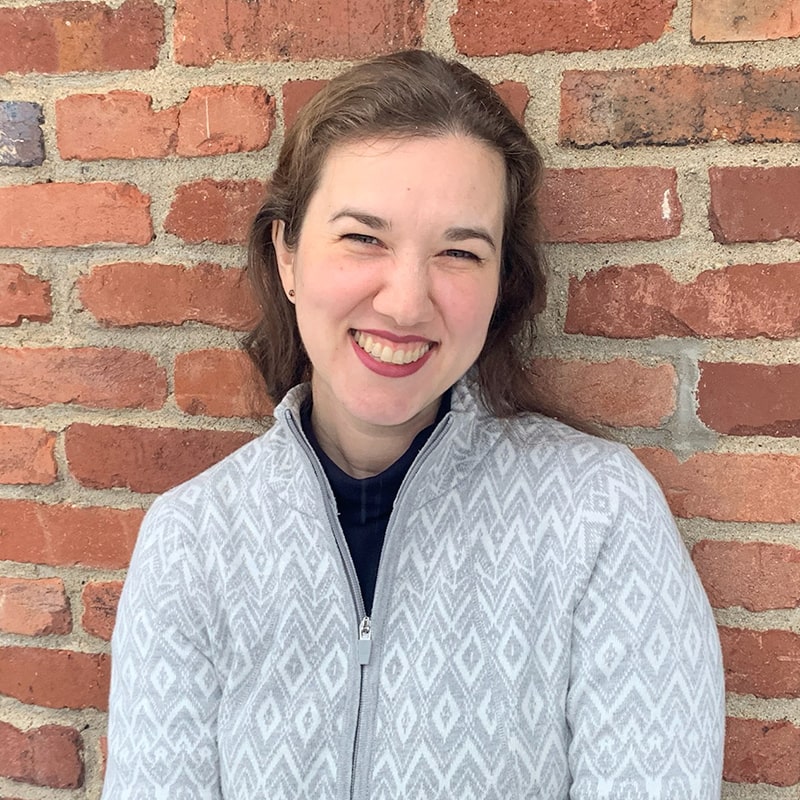 “Language is everywhere,” said special faculty in Carnegie Mellon’s Department of Philosophy, Christina Bjorndahl. “Whether it’s used to maintain the status quo or challenge it, language is everywhere.”
“Language is everywhere,” said special faculty in Carnegie Mellon’s Department of Philosophy, Christina Bjorndahl. “Whether it’s used to maintain the status quo or challenge it, language is everywhere.”
Bjorndahl (she/her) is one of the few selected winners of the Provost’s Inclusive Teaching Fellowship – a competitive program for staff and faculty who (re)design their own courses. With the theme of “diversifying course material,” Bjorndahl updated 80-180 Nature of Language, a popular linguistics course, to better represent perspectives on language and linguistic and dialectal diversity.
Though Nature of Language is an introduction to the field of linguistics, Bjorndahl aims to teach her students a wide range of topics that are relevant to many issues today: accent bias, where people are discriminated against for the accent they use, is relevant in the discussion of many minoritized dialects, but is particularly relevant in the discussion of African American Vernacular English (AAVE), a style of English that has been historically questioned on its legitimacy and “correctness,” despite the racist undertones of doing so. Additionally, vocal fry — a style of speaking in which someone may sound “creaky” — is more likely to be criticized when coming from a woman, and thus is relevant in the discussion of sexism.
“I aim to show students that when you hear people speaking in a different dialect, it’s not that they ‘don’t have grammar,’” Bjorndahl shared. “These dialects and accents just haven’t been accepted yet.”
With the fellowship, Bjorndahl has expanded Nature of Language to tackle the issues of Indigenous language and dialect representation, as well as analyzing how they are discussed by academia. To do this, Bjorndahl assigned her students a wiki project in which they were able to research an Indigenous language by comparing Indigenous and non-Indigenous sources that discussed it.
“What students found was that in sources written by non-Indigenous authors, the language was talked about in the past tense, thereby contributing to the erasure of modern Indigenous voices. Meanwhile, in sources by Indigenous authors, languages were described in the present tense, as they are still alive and are important to certain communities,” she said.
Bjorndahl structures the coursework and topics in Nature of Language with intention. She hopes that students are encouraged to challenge preconceived notions about different languages, dialects, or accents they may have. Furthermore, with the new module on Indigenous languages, she aims for students to reflect on their relationship with colonial linguistic structures and languages (English, Spanish and French).
“I always get a diverse group of students from all different majors and places in their academic career,” she said. “So this course is a way I can make an impact and reach people who may not think about these issues in their other courses or day-to-day lives.”
Bjorndahl’s students, however, teach her as much as she teaches them — and she is grateful for that. During a unit on acoustic phonetics in which Bjorndahl was teaching students about how the human larynx produces speech of different pitches, a student had questioned how pitch could be discussed beyond the gender binary and consider transgender people, since many aim to change their pitch through hormones or vocal exercises.
“Every field has the opportunity to do better — and my students came to me and pushed me to do better,” Bjorndahl shared. “It made me think: how does what I teach reify and maintain oppressive structures?”
Being rewarded the Provost’s Inclusive Teaching Fellowship has allowed Bjorndahl to do the work in addressing these structures. However, one of the most valuable aspects of the fellowship was the conversations she had with other recipients who come from different colleges and disciplines. Through these discussions, Bjorndahl learned more about diversity, equity, and inclusion (DE&I), and how to incorporate them into coursework effectively.
“There is not a one-size-fits-all approach to implementing DE&I into a course,” she said. “You have to account for the positionality of the instructor in relation to the issues discussed and the students. As a white woman, there are certain things or topics I can discuss easily and others that will require more thought and care.”
In the future, Bjorndahl hopes that the Provost’s Inclusive Teaching Fellowship can grow and leverage the resources needed to bring more diverse voices, guest speakers, and scholars from marginalized communities. Overall, the fellowship has given Bjorndahl the means to explicitly push Nature of Language in the direction of racial justice and other DE&I related subjects – something she had wanted to do for a long time.
Initiatives from the Information System Department
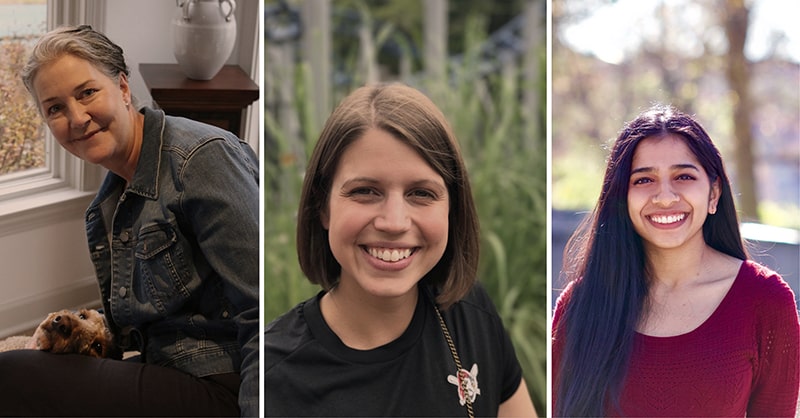 The diversity, equity, and inclusion (DE&I) strategy from the Information Systems (IS) program is part of the university’s larger effort to confront racism and promote equity on campus and beyond. This semester, “The Garden'' had the opportunity to learn more about IS and its DE&I initiatives, from its humble beginnings in December 2019 to its recent programs that are going strong despite the challenges of a virtual world.
The diversity, equity, and inclusion (DE&I) strategy from the Information Systems (IS) program is part of the university’s larger effort to confront racism and promote equity on campus and beyond. This semester, “The Garden'' had the opportunity to learn more about IS and its DE&I initiatives, from its humble beginnings in December 2019 to its recent programs that are going strong despite the challenges of a virtual world.
Like many DE&I strategies throughout campus, the Information Systems program has a bi-weekly committee attended by staff and faculty representatives. Much of the organizing and coordinating of these meetings come from Julia Poepping (she/her), the program’s associate director of partnership development.
“My role in this committee provides an opportunity to work closely with other IS faculty and staff, which I really enjoy,” Poepping said. “And I believe that a more diverse and inclusive organization not only delivers superior results but is a much more fun and interesting place to learn and work.”
Beyond creating a better learning and working environment for all IS students, faculty and staff, Poepping wants to create a culture centered on DE&I. This, she says, would involve educating people on the importance of diversity, equity and inclusion, but also taking what is learned and applying it to our everyday lives.
“It’s important to not just understand what DE&I means, but to change how we act,” Poepping shared. “That’s the challenging part.”
Although the committee was formed before the coronavirus pandemic, most of the meetings have been virtual. This, of course, presented difficulties as plans made prior to the introduction of COVID-19 guidelines in mind fell apart. However, the IS department has shown resilience in not only meeting the standards of their five-step DE&I plan, but also uplifting the voices and needs of students.
“Every level of seniority has listened to students and is showing that our department isn’t just talking, they’re doing the work as well,” said Correy Dandoy (she/her), an academic advisor and member of the DE&I committee.
On top of being a committee member, Dandoy manages the IS program’s Instagram account. Social media has become pivotal to creating a sense of student connectedness and community, particularly in a pandemic that has left so many of us physically apart. However, IS has taken social media to the next level by incorporating DE&I into their posts and stories. Dandoy, through student takeovers and highlights, has made all students part of the Information Systems family — something that is particularly important for first-year students.
“Instagram is a great advertising tool to show the Carnegie Mellon community what we’re doing and who we are,” Dandoy said. “Specifically, we’ve been able to promote our new Women in IS mentorship program.”
Women in Information Systems is a new mentorship program that aims to connect first-year women with upperclassmen to get academic advice, learn more about IS, form valuable mentor-mentee relationships and more. This is an integral part of the department’s efforts to improve DE&I while also centering students.
“It really makes me happy seeing the genuine excitement from students about these kinds of programs,” shared Dandoy. “In a Women in IS interest meeting, I expected four or five of them to show up — instead, at least 25 students came.”
Like the department’s DE&I efforts, Women in IS came out of a planning committee led by advisors and students. Shalini Rao (she/her), a member of the planning committee who is now part of Women in IS leadership, shared more about the program’s important origins and purpose. Rao’s role in Women in IS was inspired by her own experiences as a first-year student: she was fortunate enough to have a resident assistant in IS to look up to and talk to for advice — eventually, she realized that not every first-year has that opportunity.
“IS as a department and a major is interdisciplinary and gives a lot of freedom to the students, which isn’t a bad thing,” said Rao, now a junior. “But navigating classes as a first year is that much more difficult if you don’t know what you want to do.”
Figuring out class schedules is just a fraction of what Women in IS does and can do in the near future. The program, just like a DE&I plan, is capable of evolving over time to best meet the needs of students. Rao has many ideas for Women in IS, such as expanding mentorship beyond first-year students, reaching out to the IS alumni network, and mitigating imposter syndrome from women in the Information Systems industry early on in their careers.
“Figuring out what you want to contribute to society — not just what classes to take or what job prospects to look for — is not something that is taught in class,” shared Rao. “Talking to different people and learning about their perspectives can.”
In addition to serving women entering the field of information systems for the first time and exposing them to new perspectives, Women in IS plays a large role in empowering women of color. It is important for first-year students to find and possibly connect with mentors who look like them or have similar experiences.
“The IS department has been proactive in supporting women of color, as well as creating a space for conversation and community,” Rao said. “I’m very happy that IS, and the university, has faced the strong and necessary push to openly address issues of racism, sexism, classism, and more.”
Poepping and Dandoy share the same sentiments of happiness and hope, particularly with the overall university’s five-year strategic plan to confront issues related to DE&I on campus.
“The five-year roadmap is a really exciting iteration to follow because it’s aggressive but achievable,” Poepping said of the matter.
“Other departments are working on similar goals, so this is a perfect time for improved organizing and coalition building,” Dandoy shared.
With Information Systems’ ambitious strategy to change their community for the better, Poepping, Dandoy, and students like Rao, are ready to meet the challenge.
Conversation & Candy
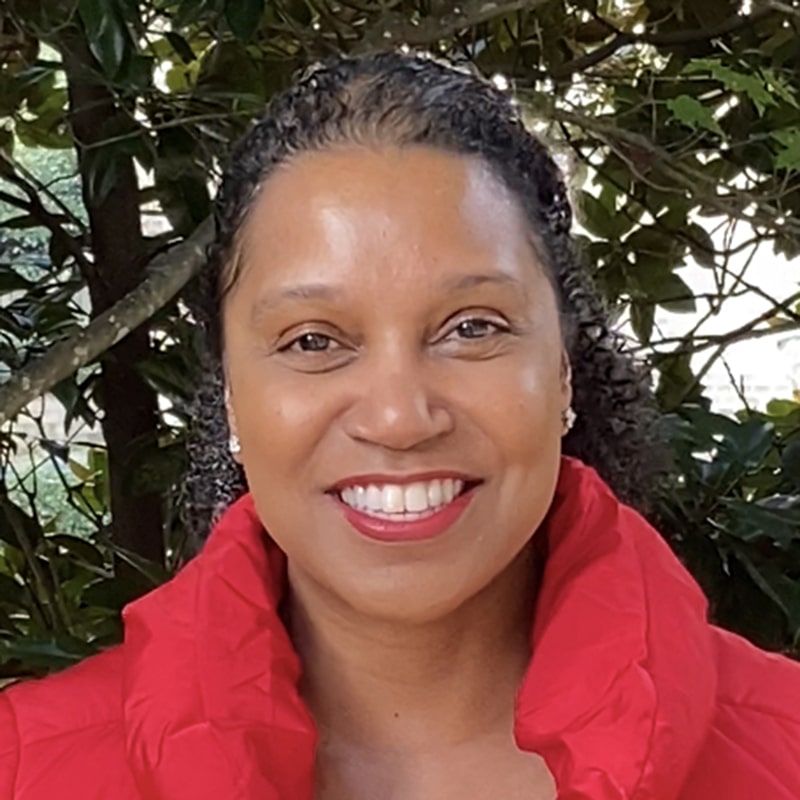 CMU alumna Shauna C. Grovell (she/her) is reimagining the way we connect and have conversations about difficult topics. The 1992 graduate is using her experiences at Carnegie Mellon, in the workforce, and as a business owner to give back to her alma mater through a virtual event, Candy & Conversations. The event is currently scheduled for Jan. 25, 2021.
CMU alumna Shauna C. Grovell (she/her) is reimagining the way we connect and have conversations about difficult topics. The 1992 graduate is using her experiences at Carnegie Mellon, in the workforce, and as a business owner to give back to her alma mater through a virtual event, Candy & Conversations. The event is currently scheduled for Jan. 25, 2021.
Grovell, who studied history and professional writing at what was then known as the College of Humanities and Social Sciences, has never truly left CMU. She is proud of her alma mater, often reconnecting with alumni and even serving as president for the Atlanta chapter of the CMU Alumni Association.
“My time at CMU really cemented the core values of integrity, passion and respect,” Grovell said. “These values influenced my four years at CMU and have remained with me throughout my career.”
Following graduation, Grovell dove into the work of diversity, equity and inclusion — which at the time, was part of human resources. She worked at multiple companies, including Walmart, as a customer experience executive, where she fine tuned the expertise needed to form her own business, The Customer Experience Unleashed!. Founded in 2012, an important goal for Grovell and her clients is the big dilemma faced by many workplaces: how do you truly create an inclusive environment? To Grovell, it is through communicating with one another and being an active, engaged participant in the solution to provide a positive environment where everyone can be their personal best.
“If people are in an environment where they know they can be successful, they will thrive,” she said.
With Candy & Conversations, Grovell hopes to create an inclusive environment for students, staff and faculty in Dietrich College to talk about anything. Over her career, Grovell has found that we often have barriers between ourselves and people who may not have the exact same experiences as us. Through the virtual event, Grovell hopes to show that we all have more in common than we think — and, to realize this, we must have tough conversations.
“If I get to know you a little bit better, you get to know me better. With that, we can resolve conflict a little better and have a real conversation about the issues at hand,” Grovell explained.
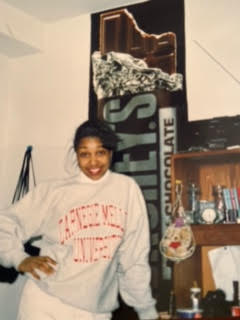 As the United States faces a pandemic and the struggle of social injustice, having conversations is more important now than ever. With subjects like these, tension or conflict is inevitable; however, Grovell finds conflict to be a part of having different perspectives.
As the United States faces a pandemic and the struggle of social injustice, having conversations is more important now than ever. With subjects like these, tension or conflict is inevitable; however, Grovell finds conflict to be a part of having different perspectives.
“What is most important is understanding your audience and having empathy, especially in the face of two frightening scenarios that people are trying to navigate,” she said.
Candy & Conversations is Grovell’s unique response to these current events. Zoom, while exhausting over time, has granted many like Grovell the opportunity to connect more intimately with people she would not have pre-pandemic. The event, though not explicitly titled as a diversity or anti-racism talk, aims to give participants the flexibility to have open-ended, honest conversations.
“Candy & Conversations is an opportunity for people to just talk, and hopefully be able to reconnect in person after the pandemic,” she shared. “It’s really a pleasure to give back to CMU in this way and be part of their active plans to address issues of diversity.”
Candy and Conversations is currently scheduled to occur on Jan. 25 from 6 to 7 p.m.
Please email Ayana Ledford if you would like to be notified when registration is live.
“On Diversity,” by Ruel Beresford
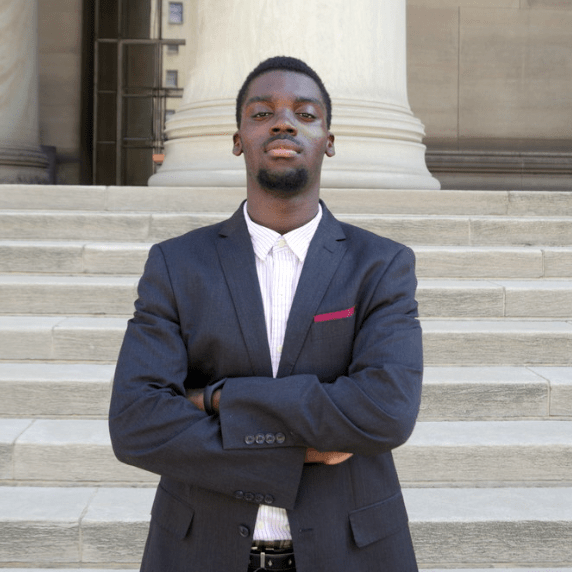 Earlier in the semester, Associate Dean Joseph Devine and other administrators in Carnegie Mellon requested my presence in a series of town halls that the university intended to host, called the CMU’s Diversity and Inclusion Roundtable. We virtually meet about once a month and include students from practically every college of the university, ranging from MCS to CFA to Dietrich. These students, who hail from nearly every continent on our planet, represent numerous perspectives. The undergraduate and graduate student participants alike are true Tartans: they are members of professional organizations; they are linchpins in identity groups like SPIRIT, SALSA and PRISM; they conduct advanced research; they find themselves in a plethora of leadership and mentorship roles. Overall, they are upstanding members of the university community, excellent representatives of what a Carnegie Mellon education should look like.
Earlier in the semester, Associate Dean Joseph Devine and other administrators in Carnegie Mellon requested my presence in a series of town halls that the university intended to host, called the CMU’s Diversity and Inclusion Roundtable. We virtually meet about once a month and include students from practically every college of the university, ranging from MCS to CFA to Dietrich. These students, who hail from nearly every continent on our planet, represent numerous perspectives. The undergraduate and graduate student participants alike are true Tartans: they are members of professional organizations; they are linchpins in identity groups like SPIRIT, SALSA and PRISM; they conduct advanced research; they find themselves in a plethora of leadership and mentorship roles. Overall, they are upstanding members of the university community, excellent representatives of what a Carnegie Mellon education should look like.
However, these town halls are not just a place where our accomplishments are simply lauded. They serve a more focused and serious purpose: here, students and faculty meet in order to discuss Carnegie Mellon’s role in structural racism, and what we can do in order to make the university a more inclusive and diverse place. That name and subsequent description, however, is what almost made me decline the invitation to join in the first place.
It's not because I personally dislike diversity, equity or inclusion –– like many, I derive positive connotations from all those words. There is no argument that the United States has a humongous shortcoming in ensuring that everyone is treated fairly. As a descendent of the peoples who were forcibly conscripted to build the infrastructure and economy in which the “Great Democratic Experiment” functioned on, I would like to ensure that all minoritized people get the just compensation for the centuries of marginalization that they were forced to endure.
What made me hesitant was the overall fear that town halls such as these were futile, unable to make the structural changes needed to solve the systemic issues that I was forced to face and endure as a citizen of this nation. I felt like a pawn, not of the university per se, but of society, forced into simple one square movements, never allowed to move as freely, or have the subsequent value, of the mighty Queen. I had no power, I thought, as even with my education I was just a student, only seen as useful for a specific perspective that could be ignored at the whim of the university.
This came in the context of the larger cultural conversation of “diversity and inclusion” that was now underway as the result of the travesties that occurred to Breonna Taylor, George Floyd, and Ahmad Arbery. It seemed that the United States was finally ready to have tough but necessary conversations about systemic racism and the peculiar consequences that born of the peculiar institution. In May, when I went to a Black Lives Matter protest in my hometown and saw people of every background and ethnicity marching alongside me, I was heartened –– I thought the United States was finally listening to people like me. Even the polls noted this: for the first time ever, a majority of Americans agreed with the Black Lives Matter movement, and even in the labyrinthine halls of Congress, the mechanisms of change were running, and it seemed that police reform was coming and that African Americans would finally get the policy that they had requested for decades.
Yet as some, but very few, protests became violent, certain politicians decided to repolish the dog whistles hearkening to the ‘60’s southern and suburban strategy, and my hope began to fade.
It faded even further when people like the Wells Fargo CEO said that there just weren’t enough qualified Black people for him to hire. I realized that the powerful and elite only cared about their optics and their bottom line, and never about fixing the inequities that helped to bolster their privileged position. “Diversity” and “inclusion,” by mid-summer buzzwords, had become akin to the infamous Instagram black square that everyone shared on #BlackoutTuesday in order to appear to be in solidarity. People only wanted to be performative, saying the words in an attempt to be “woke,” while failing to educate themselves and act against the structures that continue to oppress minoritized populations. And just when I could not get more frustrated, the Fence – which was painted for Black Lives Matter – was vandalized to say “All lives matter.” That was a breaking point where I became even more jaded and felt powerless.
Replacing “Black” with “All Lives Matter” did not reinforce the fact that my life, or lives like mine actually mattered, as those who champion that slogan claim — it instead undermined them, as our narrative was overwritten, and we were once again marginalized. Seeing the university fumble their response reinforced the sentiment to me that they only cared about their reputation, and not about the students who make up a combined 7% of their population. I even believed that the latter was a result of the former. In a town hall hosted by SPIRIT following the vandalism of the Fence, I realized that I was not the only one that felt this way. I was a part of a growing set of students who felt that the university did not care about them and only wanted them as faces on advertising, and not in a classroom. They would say, “Black lives matter,” but never show it.
So that begs the question: why did I bother to join CMU’s Diversity and Inclusion Roundtable if I saw them as useless? I joined because I began to see the actions that the university was taking. From the hiring of a diversity officer to help diversify the university, to seeing the Institute for Politics and Strategy (IPS) host conversations on race, which I helped to ideate and organize as the diversity chair of the IPS Student Advisory Council, I saw the university attempt to atone for its mistakes. Thus, when I emailed my acceptance to join the roundtable, I did it with the mindset that if the university was willing to work to improve themselves, and invest in that self-improvement, I would be glad to help them.
Diversity and inclusion as buzzwords are weak and ineffectual at best, and deceptive at worst. However, as action items, they are powerful. Like Polaris in the night sky did for many fleeing slaves, they can guide an institution imprisoned by structural racism to free themselves and serve everybody instead of a privileged few.
Poetry Selection: “American Dream” by Ethan Rhabb
The Garden is fortunate to receive a poetry submission by Ethan Rhabb, a junior studying policy and management and international relations.
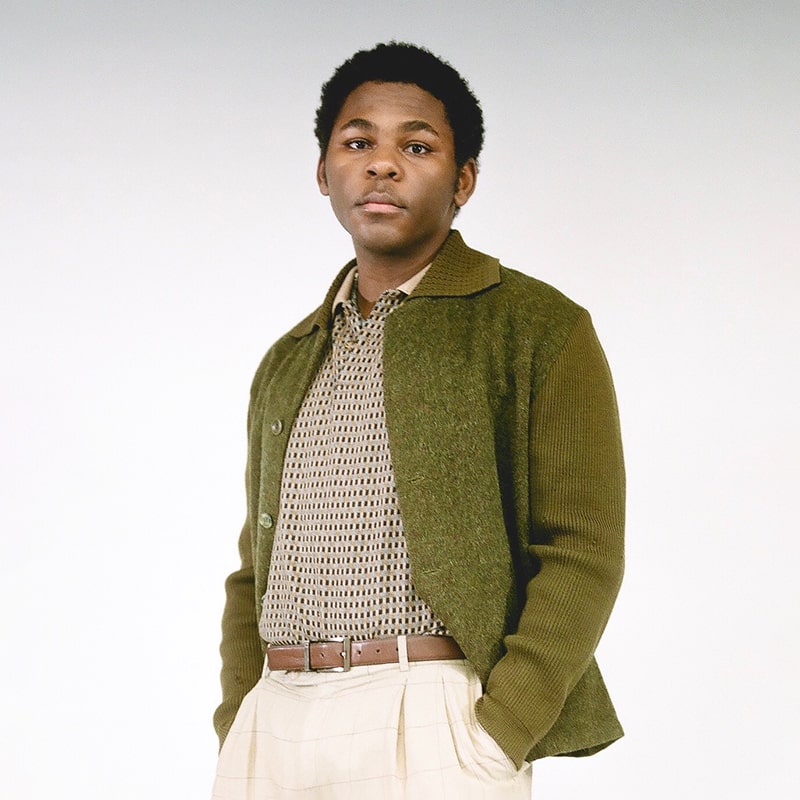 American Dream
American Dream
A Chinese tree grew in a backyard in Brooklyn
and it stood for lady liberty and immigrant hope
While the country of the state of the city of that borough
made itself to be an international joke
A Californian rosebush grew in my backyard in Queens
and I know not a damn thing about what it stood for
But it didn’t outgrow the rent and loans
so forgive me if I’m wanting more
Because a Bahamian bush grew in a backyard down South
and the only things that stood were slaves
who got sermons—not food—to fill their mouths
and, forgive my blasphemy, got played
And a real tree grows in Brazil
and stands on buttresses 200 feet high
with more species of ants in its boughs
than there will ever be in the whole British Isles
And we know how that’s going
A Comic by Iris Pei
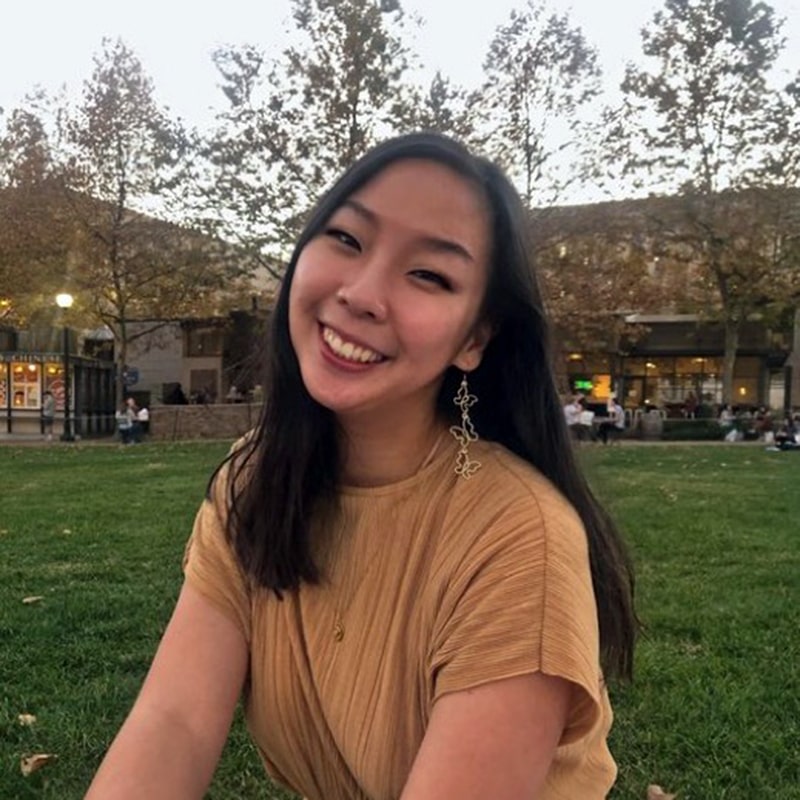 Iris Pei, a senior in statistics and data science, wrote and drew the following comic about her favorite moments at Carnegie Mellon.
Iris Pei, a senior in statistics and data science, wrote and drew the following comic about her favorite moments at Carnegie Mellon.
